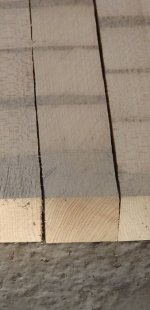Yesterday i had the opportunity to play with a cuechanger LD-shaft who are made by a German cuemaker Oliver Stopps .
I was more than impressed with the playability and low deflection qualities of this shaft .
This shaft gives you ultra low deflection with a lot of feedback and cueball control .
As far as low deflection this is the best shaft i have ever played with .
I play with a BD cue with SS360 shaft wich is a great shaft for me but has a little bit more deflection .
Of all the shafts i played with there are only 2 shafts who managed to put a smile on my face , i'm happy that i found this second shaft yesterday .
Don't ask me wich is the best out of the two because i don't know , the only difference is that the cuechanger has less deflection than my SS360 .
I was more than impressed with the playability and low deflection qualities of this shaft .
This shaft gives you ultra low deflection with a lot of feedback and cueball control .
As far as low deflection this is the best shaft i have ever played with .
I play with a BD cue with SS360 shaft wich is a great shaft for me but has a little bit more deflection .
Of all the shafts i played with there are only 2 shafts who managed to put a smile on my face , i'm happy that i found this second shaft yesterday .
Don't ask me wich is the best out of the two because i don't know , the only difference is that the cuechanger has less deflection than my SS360 .
